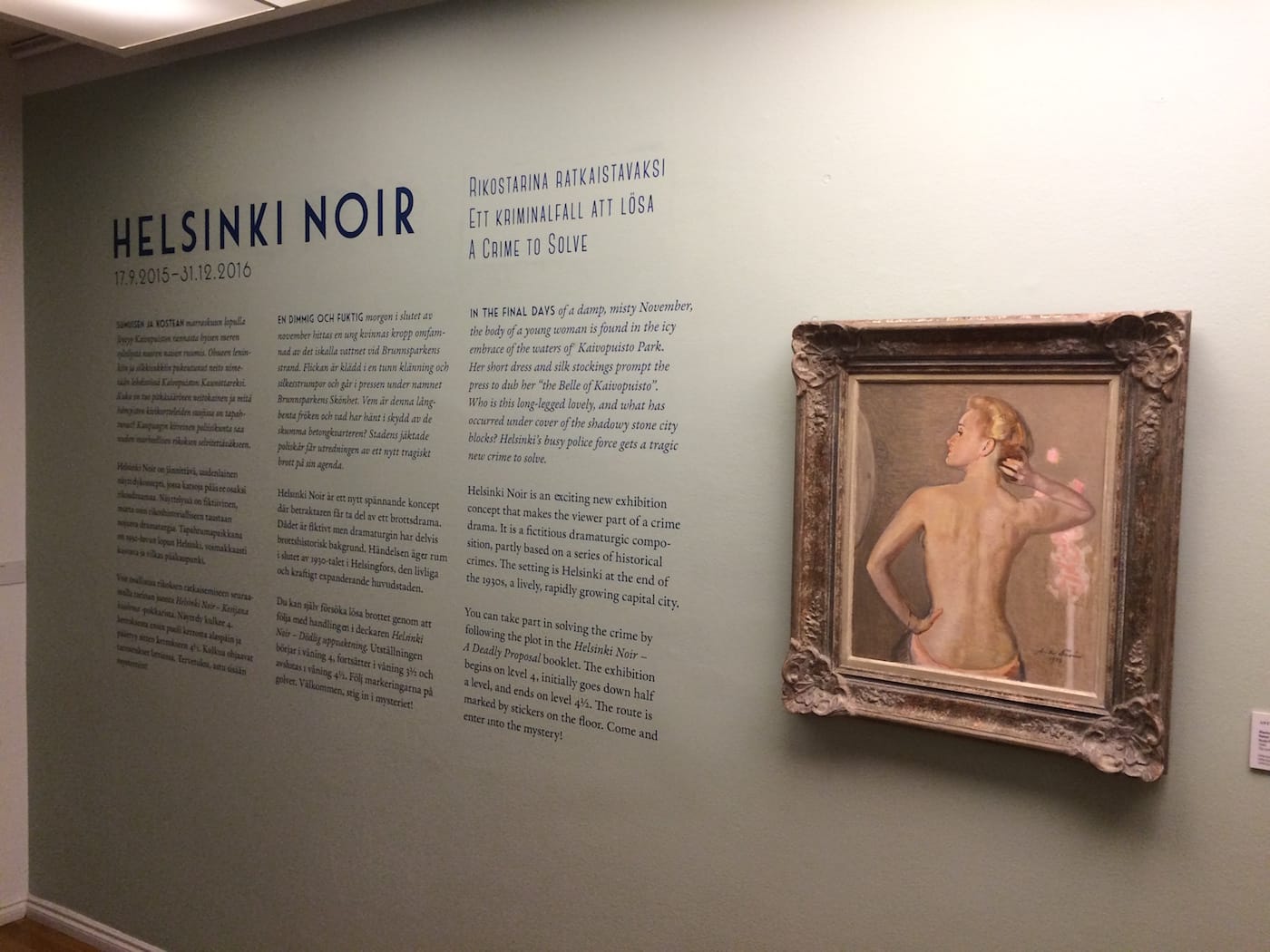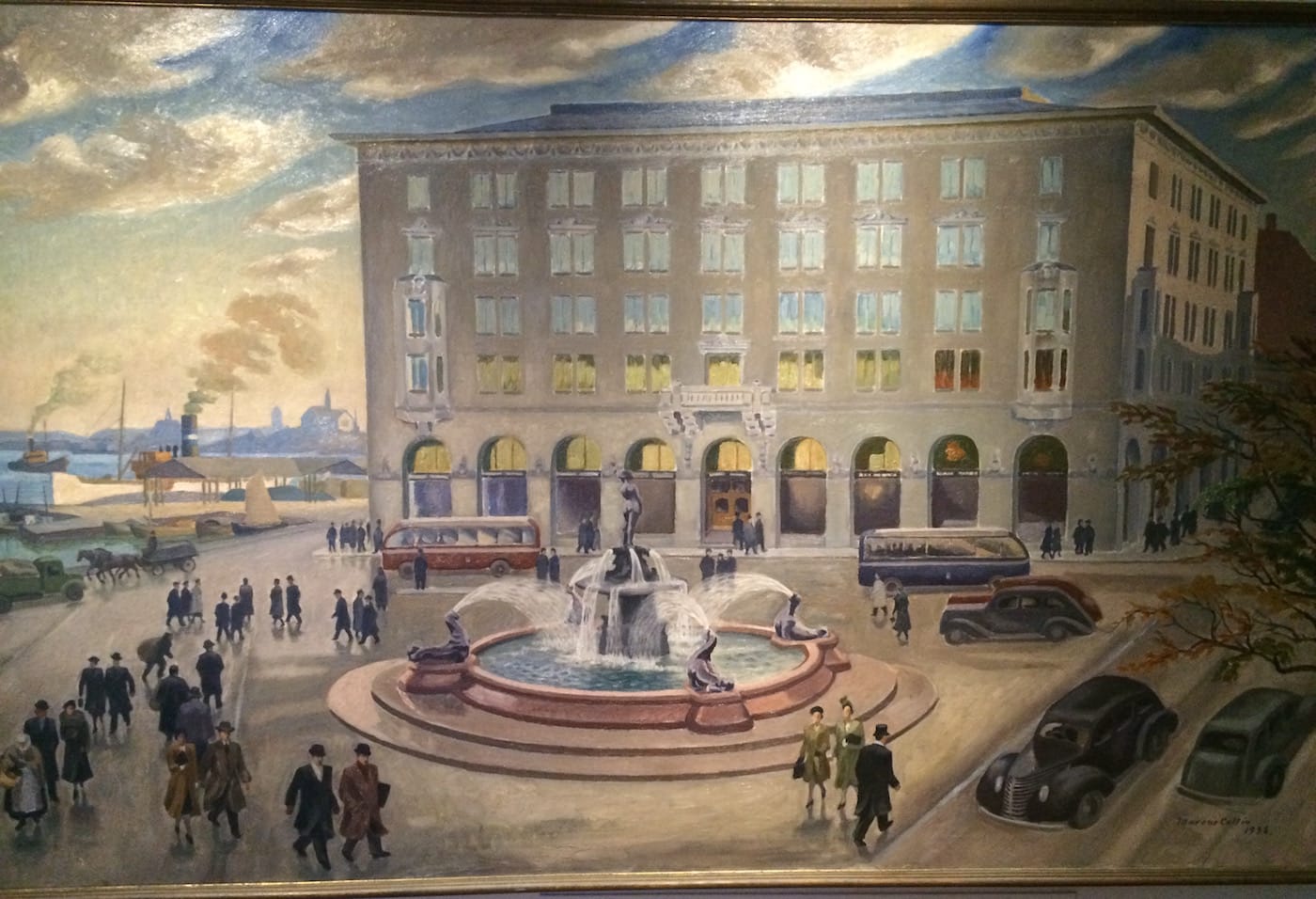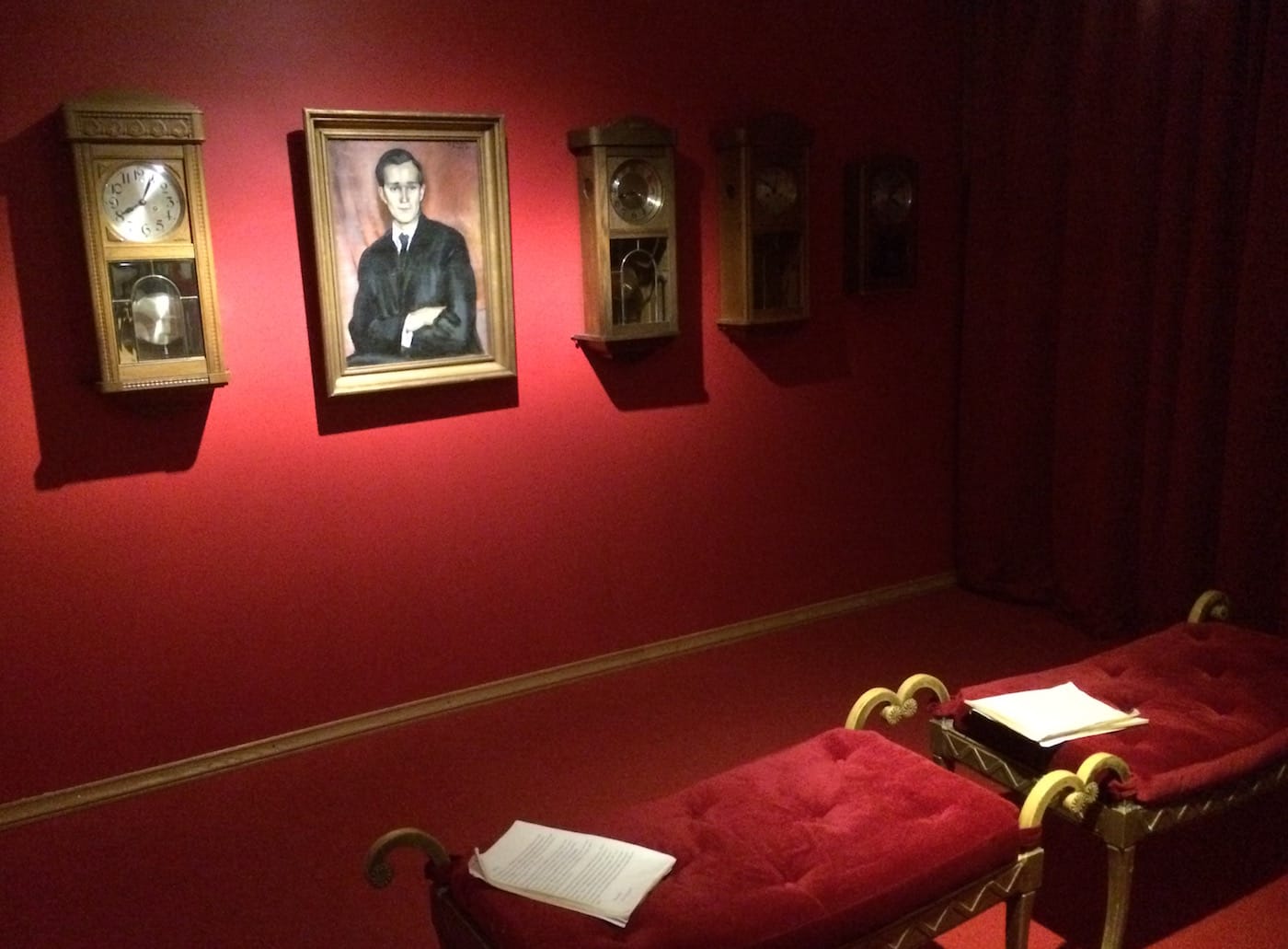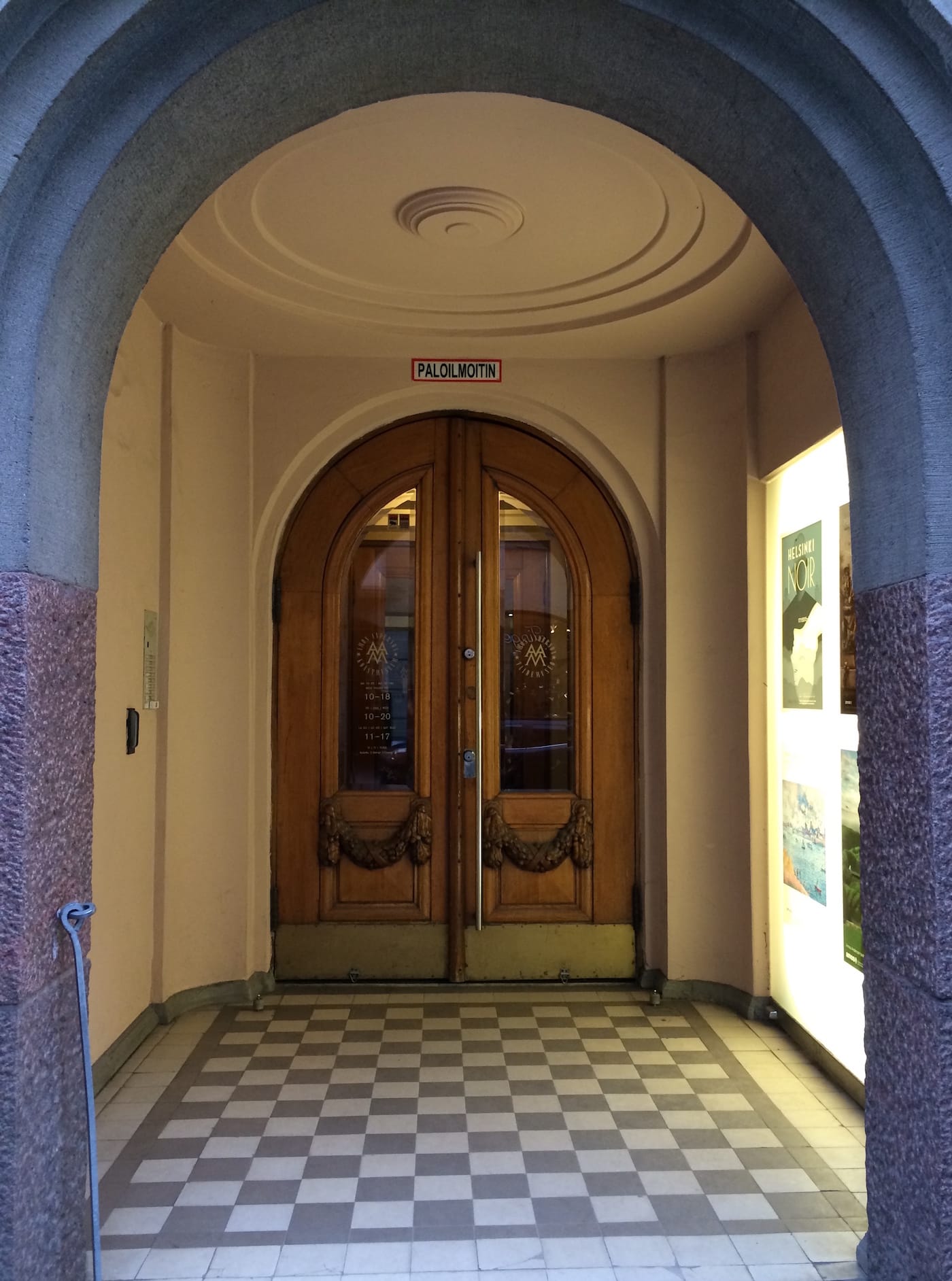A Murder Mystery Set in a Finnish Art Museum
HELSINKI — "In the final days of a damp, misty November, the body of a young woman is found in the icy embrace of the waters off Kaivopuisto Park."

HELSINKI — “In the final days of a damp, misty November, the body of a young woman is found in the icy embrace of the waters off Kaivopuisto Park. Her short dress and silk stockings prompt the press to dub her ‘the belle of Kaivopuisto.’ Who is this long-legged lovely, and what has occurred under cover of the shadowy stone city blocks? Helsinki’s busy police force gets a tragic new crime to solve.”
So begins a murder mystery that’s at the center of an unusual and charming exhibit at the Amos Anderson Art Museum. Billed as a “fictitious dramaturgic composition” by Finland’s largest private art museum, the show invites visitors to use paintings to follow a story set in Helsinki during the 1930s, with the goal of solving the case of the mysterious murdered girl. (It’s loosely based on a real murder case from the time.)

Upon entering the galleries, visitors to Helsinki Noir are provided with a short book, each of whose 13 chapters corresponds to a specific room. Entitled A Deadly Proposal and written by Amos Anderson’s head of exhibitions, Susanna Luojus, the book (available in Finnish, Swedish, and English) unravels the story engagingly with a nod to the hard-boiled style of Raymond Chandler. What’s quite remarkable about the exhibit, however, is that as the tale of the police investigation unfolds, keen-eyed viewers will see that tiny details from it are to be found in the period paintings on display.
For instance, when a flatmate of the murdered girl goes to the police to report her friend as missing, she describes how they would visit Helsinki’s market square together on their way to work. The neighborhood described can be seen in front of you as you read the chapter, in Santeri Salokivi’s 1930 painting “Kauppatori,” which shows the bustling market and vendors selling fresh herring and salmon.

As the detectives uncover more details of the murder, familiar film noir themes emerge: seduction, betrayal, and double indemnity, all of which are depicted in the selected artworks. A mysterious secret lover is suspected, for instance: a handsome Finnish clockmaker. He’s portrayed in the exhibit in Yrjö Ollila’s 1921 portrait of a clock maker, “Kelloseppä,” featuring a well-dressed young man who stares out at the viewer.
The film noir atmosphere is heightened by haunting jazz music from the period and interactive installations. One of the latter follows a startling revelation about the murder and leads the viewer into a room plunged in darkness, where the paintings are replaced with a sinister, life-sized model of the murderer. Love letters are discovered during the investigation, copies of which lie around the galleries to be read. In part because the accompanying book is short enough to keep viewers’ attention focused on the paintings, the exhibit manages to stay intriguing rather than hokey. In a way, it brings to mind the immersive theater shows that have become increasingly popular in New York, most notably Punchdrunk’s Sleep No More.

The selected paintings, 30 or so, are largely drawn from the museum’s impressive holdings of Finnish modernism. The institution was founded by newspaper tycoon Amos Anderson in 1913, in a beautiful Art Nouveau building in downtown Helsinki. Originally designed as his office and living quarters, the building was turned into a gallery in the 1960s, featuring much of his personal collection. Represented artists include members of the Association of Finnish Fine Arts Foundations, such as Birger Carlstedt, Ragnar Ekelund, Väinö Kamppuri, and Santeri Salokivi. They’re not particularly well known outside of Finland, but the overall style of somber figures set against drab cityscapes brings to mind Edward Hopper, only with more snow. Their work is punctuated by that of contemporary artists such as Jarno Vesala, whose installations depicting life-size human figures in a nightmarish setting begin and end the exhibit.

Helsinki Noir is a perfect show for a city which still largely bears the look of the early 20th century. Although bombed by the USSR on several occasions, Helsinki was left relatively undisturbed during World War II in comparison to the devastation that ravaged many other European metropolises. Walking amid the trams, from the stunning Art Nouveau central train station to the ornate department stores designed in the Finnish National Romantic style, it’s easy to picture yourself back in time. The paintings on display at Amos Anderson show the old Helsinki, but the world outside the museum doors looks remarkably unchanged today.

Helsinki Noir continues at the Amos Anderson Art Museum (Yrjönkatu 27, Helsinki) through December 31.




